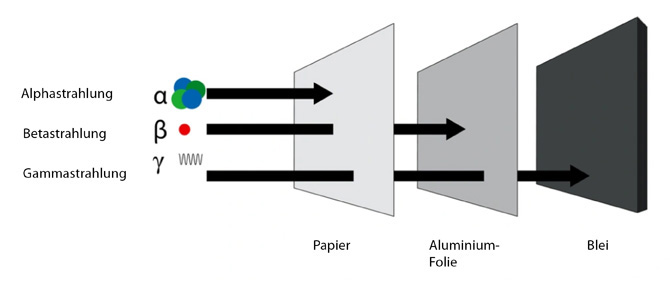
Gamma rays in building materials endanger health
The European Union (EU) has developed the Activity Concentration Index to assess radiation exposure
The large-scale installation of radioactive building materials indoors can endanger the health of the occupants. Granite, tuff or pumice are building materials with radioactive potential. However, sand, gravel, limestone and natural gypsum can also be radioactively contaminated under certain circumstances. The builder does not always know which rock is in a product. For example, a masonry block is offered under the brand name “Liapor”, without the buyer knowing that pumice rock is hidden behind it. The European Union has therefore developed the Activity Concentration Index (ACI) to assess radiation exposure from building materials indoors. The Institute for Building Biology in Rosenheim (Germany) recommends an ACI value of less than 0.75 for health protection.
How the ACI value is determined
With the Radiation Protection Ordinance of 2001 (Germany), the permissible additional radiation exposure of the population was lowered from 1.5 mSv/year to 1 mSv/year. In 1999, the Radiation Protection 112 of the European Commission had proposed an Activity Concentration Index for building materials based on this basic value. The ACI value is calculated with a sum formula based on a dose of 1 mSv/a. The following individual components are included in the formula: potassium-40 (K-40), radium-226 and thorium-232. The radioactivity is determined by gamma spectrometry. The activity of radium 226 is determined via the daughter product lead 214 and the activity of thorium via lead 212. Bequerel per kilogram (Bq/kg) is used as the unit of measurement for the activity.
An example for the calculation
The following values are determined spectrometrically:
Lead 212 < 0.2 for thorium
Lead 214 < 0.2 for radium
K-40 < 1,8
When inserted into the molecular formula, the following values are obtained:
ACI = 1.8 (K-40) / 3000 + 0.2 (Ra-226) / 300 + 0.2 (Th-232) / 200 < 1.
In addition to the natural radioactivity of the rock, the artificial radionuclide cesium-137 can be examined. For example, cesium may have been released into the environment from above-ground nuclear testing or due to the Chernobyl accident.
Amount of material used and duration of stay as a criterion
The use of contaminated building materials leads to an increase in radiation exposure in living spaces, depending on how much of it was used and how long the average length of stay is. Both external exposure to gamma radiation and exposure to the concentration of exhaled radon and its short-lived daughter products in indoor air contribute to this. The hazard potential is attributable to 90% of the radon gas and 10% of the direct radiation.
Index values of selected materials
The Federal Office for Radiation Protection (Germany) has determined the ACI values for selected building materials in an extensive series of tests.
– Gypsum products (index: 0.03 – 0.11)
– Sand-lime brick (index: 0.04 – 0.14)
– aerated concrete (index: 0.08 – 0.27)
– mortar (index: 0.14 – 0.42)
– Plasters (Index: 0.02 – 0.26)
– screeds (index: 0.17 – 0.35)
– Cement (Index: 0.14 – 0.35)
The above table shows that the index of 0.5 is met for the samples; according to this definition, no further testing of the material is required under RP 112.
Higher values were determined for the following building materials:
– Brick (index of 0.47 – 1.03).
– lightweight concrete (index of 0.50 – 1.03)
– concrete (index of 0.14 – 1.1)
According to RP 112, further controls are recommended for these products, since contributions to external exposure can range from 0.3 mSv/a to 1 mSv/a.
A comprehensive list of individual values can be found on the website of the Federal Office for Radiation Protection (see list of links below).
Further Information
ec.europa.eu/energy/sites/ener/files/documents/112.pdf
www.bfs.de/DE/themen/ion/umwelt/baustoffe/radionuklide/radionuklide_node.html
doris.bfs.de/jspui/handle/urn:nbn:de:0221-201210099810
www.bfs.de/DE/themen/ion/umwelt/baustoffe/granit/granit.html
